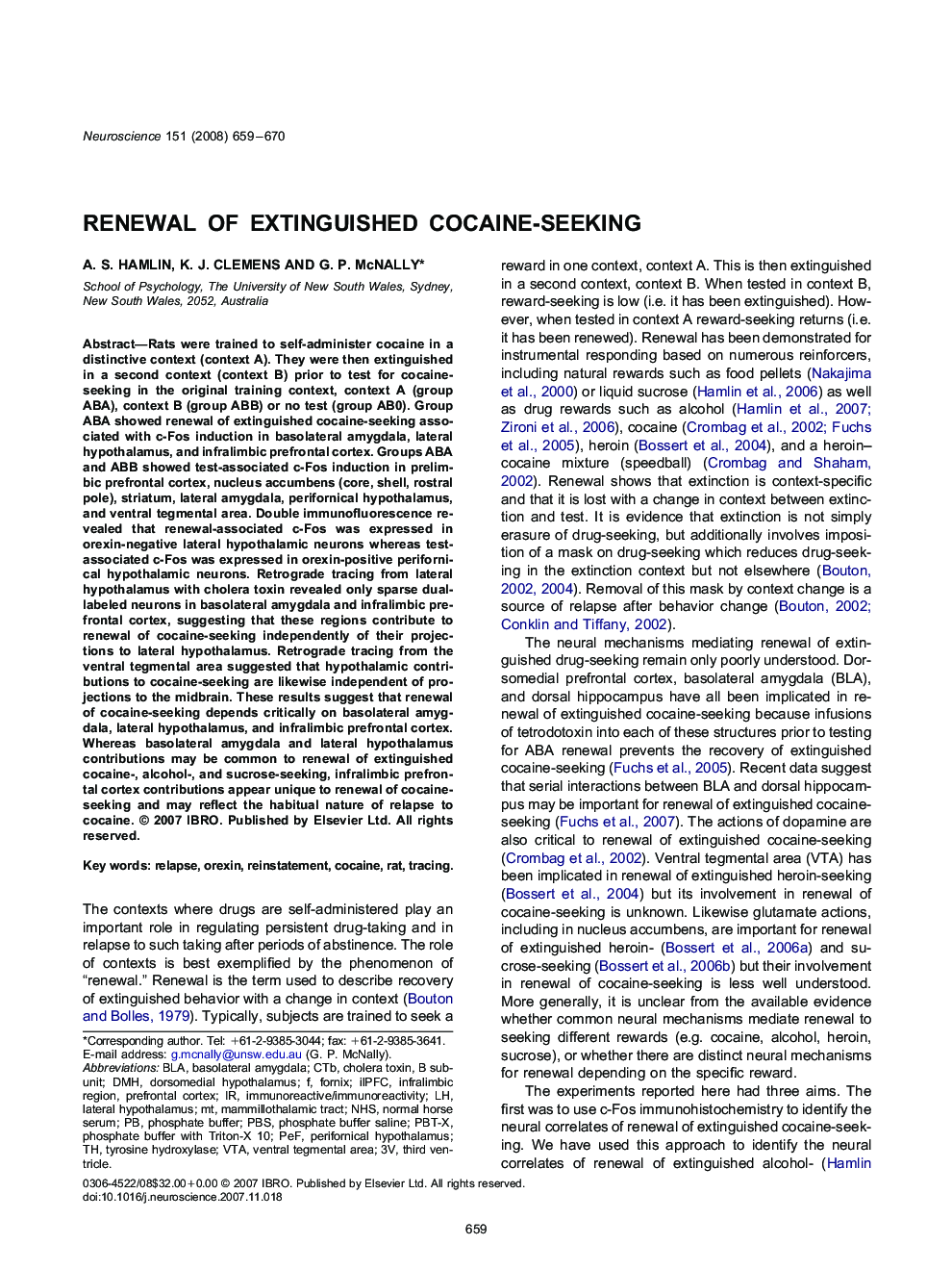| Article ID | Journal | Published Year | Pages | File Type |
|---|---|---|---|---|
| 4340829 | Neuroscience | 2008 | 12 Pages |
Rats were trained to self-administer cocaine in a distinctive context (context A). They were then extinguished in a second context (context B) prior to test for cocaine-seeking in the original training context, context A (group ABA), context B (group ABB) or no test (group AB0). Group ABA showed renewal of extinguished cocaine-seeking associated with c-Fos induction in basolateral amygdala, lateral hypothalamus, and infralimbic prefrontal cortex. Groups ABA and ABB showed test-associated c-Fos induction in prelimbic prefrontal cortex, nucleus accumbens (core, shell, rostral pole), striatum, lateral amygdala, perifornical hypothalamus, and ventral tegmental area. Double immunofluorescence revealed that renewal-associated c-Fos was expressed in orexin-negative lateral hypothalamic neurons whereas test-associated c-Fos was expressed in orexin-positive perifornical hypothalamic neurons. Retrograde tracing from lateral hypothalamus with cholera toxin revealed only sparse dual-labeled neurons in basolateral amygdala and infralimbic prefrontal cortex, suggesting that these regions contribute to renewal of cocaine-seeking independently of their projections to lateral hypothalamus. Retrograde tracing from the ventral tegmental area suggested that hypothalamic contributions to cocaine-seeking are likewise independent of projections to the midbrain. These results suggest that renewal of cocaine-seeking depends critically on basolateral amygdala, lateral hypothalamus, and infralimbic prefrontal cortex. Whereas basolateral amygdala and lateral hypothalamus contributions may be common to renewal of extinguished cocaine-, alcohol-, and sucrose-seeking, infralimbic prefrontal cortex contributions appear unique to renewal of cocaine-seeking and may reflect the habitual nature of relapse to cocaine.
